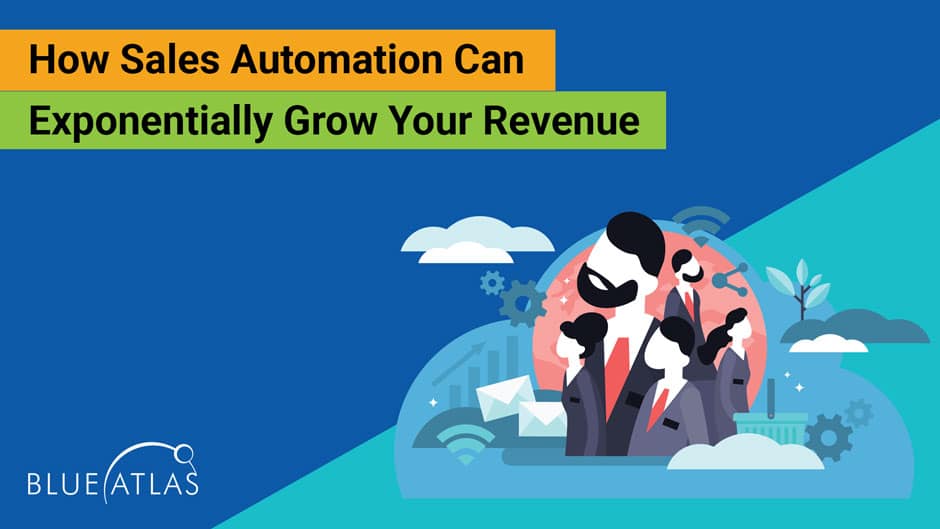Sales automation and related technologies are discussed a lot these days, but adoption rates can still be low: Studies have shown that HR, Customer Service, and even Finance are more likely to automate than sales and marketing. That indicates a lot of missed potential – and lost revenue. Here’s how sales automation can make such a difference.
Automation Means Optimization
Changing your sales process can seem challenging. Sometimes, companies may feel that “Our current sales system works just fine and we don’t have time for retraining,” or “We’re comfortable with our current sales tools and see no reason to change.”
The good news is that sales automation doesn’t always mean big changes: Think of it more of an optimization process for the tactics your business has already found effective. There’s no need to change how you treat customers or your philosophy about how to approach sales. Employees can often keep on using the day-to-day tools they are already used to. But behind the scenes, sales automation can optimize what your teams are already doing, saving them time and producing better results than they had before.
That difference can be significant. Studies have shown that early adoption of sales automation can increase metrics like customer satisfaction and efficiency up to 15 percent. Similar gains in sales potential are also seen. In fact, research shows that around a third of sales tasks can be done through automation, allowing your employees to focus on what matters most.
Automation At Each Level of Your Sales Funnel
Today’s sales automation can affect every step of the sales process, creating faster, more effective conversions. These examples show automation at work at every level of the sales funnel.
Strategy and Preparation
What regions should your sales be focused on? Which locations are seeing the best results, and why? In which markets or industries will market share be easiest to get? In-depth sales automation and mapping are key to answering these questions and making the right strategic choices for your company. Ongoing data about sales planning can also help your company spend its budget where it will do the most good. At this stage, sales automation can help teams create customer profiles for easier targeting and planning.
Marketing and Communication
While it’s not a traditional part of sales automation, we are also seeing the rise of automation technology for first-time customer contact, and basic communication tasks. An excellent example is the rise of chatbots on social media and websites. Basic chatbots can ask visitors for information and connect them with an account manager. More advanced versions can field questions, narrow down a customer’s interests, and even complete product sales. Additionally, chatbots and similar technology can help gather information about the kinds of visitors your website sees, enabling more accurate customer profiles.
Lead Management
Lead management is the traditional core of sales automation, where automation technology really shines to support filtering and classifying leads. There are many approaches to this process, based on the level of technology businesses are interested in. Leads can be sorted based on scores, sources, responses, and other data to channel the most promising leads to the top for immediate action. This allows your team to focus on the most promising prospects first.
Automation can also help identify ways to bring in the most leads, and which options produce the most high-quality leads that are likely to lead to conversions, which can save significant time. Some reports indicate that brands see a 225% increase in their volume of prospects when using the right automation technology.
Pricing and Quotes
You can also use automation to generate proposals or quotes and to manage discounts or other offers. This can be tied into the automated communication process we mentioned above or managed once buyers reach a certain point in the funnel. Buyers also appreciate this approach because they can receive proposals more quickly and access important information on demand.
When customers make a purchase, automation can also help save time when used with billing and similar processes.
Order Management and Shipping
Fulfillment, shipping, and tracking can also be incorporated into sales automation. This allows companies to respond to issues quickly and keep customers updated on the status of their orders, which can improve retention. This also allows businesses to spot shipping trends or weaknesses over time and adjust their fulfillment strategies.
Likewise, incorporating automation here can help improve inventory management, keeping businesses updated in real-time about their current inventory levels. Some companies also prefer to automate inventory re-orders when specific supplies reach a certain point.
Post-Sale Opportunities
Automation has seen great success in post-sale activities, too. That’s especially true of cross-selling and up-selling, usually through automated email offers. But automation can help in other ways, too: It can enable more reliable surveys and questionnaires after a purchase, help with product activation or sign-in, and help with renewal procedures if a subscription is involved. This can lead to better customer retention and help save plenty of time!
Don’t Forget the Savings Hiding in Automation
In addition to the direct benefits to the sales process, automation also has the potential to save your company significant expenses. Savings can come from a variety of sources, including:
- Your company may be able to work with a leaner sales staff thanks to the tasks that automation is taking care of.
- Ad targeting and buy choices can become more streamlined and efficient, leading to marketing savings.
- Employees find sales automation can help them save time and reduce stress, leading to better retention and reduced turnover costs.
- Sales automation can tune your discounts, rebates, and other offers to the most effective options, helping reduce unnecessary profit loss.
- Sales automation may be able to replace other subscriptions or fee-based services that your company uses to collect and share data.
Find Out Where You Can Apply Sales Automation in Your Company
Adopting sales automation technology can differ from business to business. You can choose where to start, and what automation goals are most important for you at this time. To learn more, contact Blue Atlas Marketing and find out how we can help you optimize. Not sure where to begin? We can talk about it together and find the most effective upgrades for your operations.





